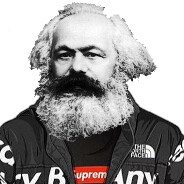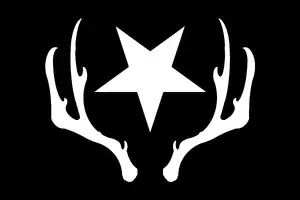So I’ve got this book I’m working on. The basic gist of it is “small 18th-century Germanic country defends itself from Prussian imperialism while the main character is radicalized against the nobility.” Everything’s still kind of a primordial soup of ideas, I have an outline and a couple potential scenes written but I don’t have all of the setting details squared yet. One idea that I keep going back and forth on is the races of everyone involved, because I don’t want it to be just humans - but I also don’t want to just thoughtlessly crib Tolkien either.
These ideas are assorted, I’d love it if you read one or two of them and gave me your thoughts:
Everyone is born basically human, but transforms (usually by the time they’re twelve) through magic into a more powerful form, based on the environment they grow up in and the skills they are taught in their most impressionable years. Magic hangs in the air of the world, and adults have to learn a combination of a ton of factual knowledge and potent meditation techniques to be able to harness it - but children, whose minds are unfettered by knowledge, naturally wield it on a subconscious level, permanently changing themselves to meet the demands of the world they are raised in.
The main races of the world are High Elves and Low Elves, Totemfolk (furries) and Daemons (elementals), with each race having dozens of subgroups. Totemfolk and Daemons are the most prominent races throughout the world by a long shot, but Low Elves tend to dominate the growing urban professional class and High Elves have a racial monopoly on royal families and noble titles throughout the still-fuedal world, so the interests of those two groups are overwhelmingly represented in positions of power.
Elven domination of the upper classes has both a push and a pull to it. On the one hand, Elves are definitely adapted to their environment of extreme privilege - their long lives offer them plenty of time to do primitive accumulation, and their small number of children means that their wealth remains relatively concentrated from generation to generation. But on the other hand, an Elf’s body requires twice as much food and twice as much rest to maintain itself compared to the other races, thus it is only even possible for a child to become Elf-like if they are raised in that environment to begin with.
Totemfolk and Daemons tend to have adaptations related to their environment or their parents’ craft. Totemfolk raised on the sea often become Mermen/maids, while those trained to ride a horse might become a centaur. Fire-aspected Daemons, called Orcs, are a common sight in many foundries - while earth-aspected ones, called Kobolds, are a common sight in many mines. A rare sight in the most developed cities is the metal-aspected Daemon, sometimes called a Jinshu, because for a long time it was thought that they were a myth from the far north.
In-universe scholars are in agreement that it is impossible to change your race once it manifests, with one notable exception: dragons. The appearance of a Dragon tends to be an ill omen for the average person, since they have a tendency to commit genocides and burn cities to the ground. But historians often regard them as great conquerors and emperors, which is usually the reason they do all of the killing.
What isn’t clear is what allows an elf to turn into a dragon - traditionally it’s thought to be high martial prowess combined with a genius intelligence, but in actuality it’s having a giant pile of gold. Dragons always arise when economic inequality is at its zenith, and the reason they become conquerors and emperors isn’t because they can fly overhead and kill a couple dozen people with fire breath - it’s because they have the ability to raise a large, well-trained and well-equipped army, which does most of the conquering but gets none of the credit.
The distinction between “High Elves” and “Low Elves” doesn’t actually exist, but has been appended by Elven scholars to explain why some elves get to have Divine Right and others are relegated to more servile positions. Magical Fae people doing phrenology.
Several times throughout history, a totemfolk or daemon have lead an army and conquered land - but history records them as elves, because often they would transform into elves after living as kings for about a decade, and their kids always end up being elves themselves.
Certain subsets of philosophers are very interested in the idea of controlling the race that children become. One group, the utopians, believe that all the world’s problems could be solved if only everyone was an elf. They have gained no small amount of influence in the ongoing colonial projects of the world, and their ideas and radical experiments have lead to some of the worst genocides in recent history.
Read China Miéville’s Bas-Lag trilogy and you’ll have lots of insights on how to build non-human fantasy races in a Marxist framework, it’s really imaginative and also quite fun… some of the races mentioned:
The Vodyanoi, a frog-like race of demihumans that do precarious work in the docks of New Crobuzon, the imperialist city-state that’s central to the world of the novels;
The Khepri, a race of scarabs where the males are mindless insects, but the women are like humans, but with scarab heads, and the ones in the city are refugees from a pogrom;
The Garuda, humans with eagle features who live in autonomous nomadic anarchist enclaves in the desert, and whose penal code revolves around the concept of choice-theft: when you infringe on someone’s rights, it’s because you stole their right not to be harmed, or their right to do something that they might have wanted to do but now can’t, like use some object that you stole;
The Remade, regular humans, but violently modified with mechanical and/or organic body parts, and put to do forced factory labor as a punishment for their crimes. The nature of the modification follows some sort of cruelly imaginative “poetic justice” on the part of Crobuzoner judges, like in a particularly cruel instance where a mother accidentally kills her baby and the judge sentences her to have the baby’s arms grafted onto her forehead, really brutal shit from an authoritarian police state.
And these are just four examples of literally dozens. I wish I had just ten percent of Miéville’s wild imagination.
edit: the books are, in this order, Perdido Street Station, The Scar and Iron Council. You can read them in any order, but there’s a few references to the previous books in the latter ones. I highly recommend reading them in order, the first one is my favorite.


